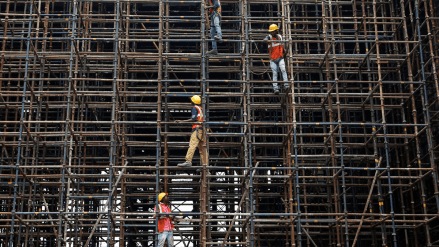Following a decisive victory in the recent Lok Sabha elections, the Modi government is expected to continue its infrastructure spending spree with a renewed focus on economic growth and job creation. Earlier this year in February, Finance Minister Nirmala Sitharaman during the interim budget announced a substantial 11% increase in capital infrastructure spending for the next fiscal year, raising the capital expenditure outlay to ₹11.11 lakh crore. This move follows a significant 33% hike last year, emphasising the government’s commitment to large-scale infrastructure development.
Major Announcements in Infrastructure
Enhanced Capital Expenditure
The capital expenditure for the next fiscal is now pegged at ₹11.11 lakh crore, marking an 11.1% increase. This consistent rise over the past four years has been a key driver of economic growth, with infrastructure spending acting as a catalyst for job creation and private investment.
The road and rail sectors are set to receive substantial funding. In the February budget, the Ministry of Road Transport and Highways was allocated ₹2.78 lakh crore, a 2.8% increase from the previous year. Indian Railways received ₹2.55 lakh crore, following last year’s historic allocation of ₹2.4 lakh crore. These funds were earmarked for the development of three major economic railway corridors and various modernization projects.
Development of Railway Corridors
The new railway funds were earmarked to support the creation of three significant economic corridors. These corridors were focused on energy, mineral, and cement transportation, port connectivity and high-traffic density routes. Part of the PM Gati Shakti initiative, these projects aim to enhance logistics efficiency, reduce costs, and decongest the existing rail network, thereby improving both freight and passenger services.
Expansion of Vande Bharat Trains
The government has ambitious plans to expand the Vande Bharat train fleet. Currently, there are around 80 Vande Bharat trains in operation, with a target to convert 40,000 existing rail bogies to Vande Bharat standards. This upgrade aims to improve passenger safety, convenience, and comfort.
On the other hand, recently Ashwini Vaishnaw said that trials for Vande Bharat sleeper trains are set to begin soon, with operational services expected to start within the next six months. The goal is to introduce 250 sleeper Vande Bharat trains by 2029.
Economic and Social Benefits
The continued focus on infrastructure spending is expected to yield significant economic benefits. Increased capital expenditure typically leads to job creation, boosts private consumption, and attracts further investment. Enhanced transportation infrastructure will facilitate faster movement of goods and passengers, driving economic activity and improving efficiency.
Finance Minister Sitharaman highlighted the positive impact of these investments, noting that the new railway corridors will not only improve freight logistics but also enhance passenger train operations. The dedicated freight corridors, along with the economic corridors, are expected to accelerate GDP growth and reduce logistical costs.
